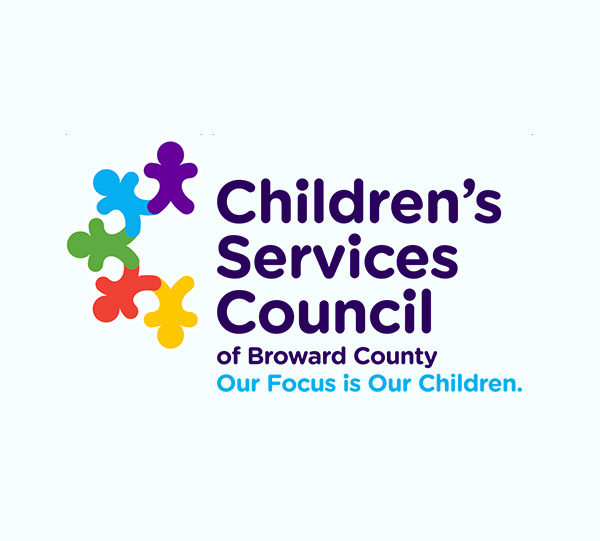Trauma Informed Care: How Children Go from “Help Me” to Healing
Resource Type
Family Resources
Resource Topic
Share this post

By: Edvardo Archer, Director of Clinical Services, 4KIDS of South Florida
When adults are faced with a physical or emotional threat, they’re typically able to remove themselves from it. Children almost never can. When you don’t know you can fight or flee, or aren’t capable of doing either, trauma ensues. Imagine falling out of a plane – constantly. That’s what it’s like for children who have been traumatized.
Children who encounter sexual, physical or emotional abuse suffer from trauma. Equally as damaging is neglect, and the signal it sends to the child that “you are not important enough to care about.”
Trauma can occur even prenatally. Research at the University of Miami has shown that when the mother is significantly stressed, her level of cortisol – the “stress hormone” – rises, and so does her baby’s. Infants who have no attachment to their mothers can suffer trauma. They have been left untethered when their very survival depends on attachment. Not surprisingly, many children who have been traumatized suffer from Post- Traumatic Stress Disorder, or PTSD. They live a constant memory. Children in foster care are two times as likely to be diagnosed with PTSD than military veterans, according to a study released by the Harvard Medical School (HMS), the University of Michigan and Casey Family Programs.
Trauma Informed Care: An insightful way of viewing behavior
There are ways to help them. Trauma Informed Care, or TIC, is an approach for therapists and others who deal with traumatized children that entails a major paradigm shift. Rather than viewing the children’s behavior as maladaptive, malicious or manipulative, therapists see it as survivalist. TIC helps to understand what message the child is sending behind that acting-out.
“I want to be good,” a traumatized child might say, “but I can’t.” In some ways, that’s true. Brain scans of traumatized and non-traumatized children show that in traumatized children, the part of the brain in charge of managing emotions is weaker than it is in non-traumatized children.
TIC Therapies
Among the more successful TIC therapies that can help traumatized children is play. Children may not know how, or yet be able, to talk about their trauma, but they can express and help heal it through play. They “speak” through behavior rather than with words; play is a positive way to do this. Is that toddler really a “hot head”? Maybe the child is trying to tell us about abuse that he or she has suffered. “Reconnecting” the child through a support network provides the child with relationships that are grounded. Another TIC therapy is attending to the child’s basic care. Is the child properly and nutritiously fed? Is he clean? Is she dressed for the climate? Tending to children’s bodies in these basic but important ways lets them know they’re safe.
Cognitive Behavioral Therapy is one of the most effective therapies and most researched. It changes someone’s actions by changing the person’s beliefs. Originally used to treat depression, CBT has become very much a go-to therapy in schools and even in the workplace. For example, a child who suffered some trauma involving a car may have a fear of sitting in the front seat. The therapist puts the fear “on trial” as a way to manage it.
Another effective therapy is Eye Movement Desensitization and Reprocessing (EMDR). This helps children reprocess the trauma by desensitizing and re-categorizing it. Its name derives from the fact that a therapist will use a back-and-forth hand motion that the child follows, moving his or her eyes from side to side in the process.
Memory “Unstuck”
More and more, those of us who work with children who have been traumatized realize that trauma is a central cause of breakdowns in relationships and behavior. Our bodies remember abuse and neglect. Severe stomach pains in a child may actually be a manifestation of the trauma that ensued from sexual abuse. An astute pediatrician who can and no physical reasons for a child’s physical ailments will often make a referral to a therapist.
The good news is that the brain remains malleable, open to the capacity to heal. While the memory of the trauma remains, children have tools they can use, with the help of qualified and caring adults, to “unstick” that memory and to process it correctly. No longer are they falling, falling, falling out of that plane.
Recommended Reading
The Connected Child: Bring hope and healing to your adoptive family by Dr. Karyn Purvis, who founded the eponymous Institute of Child Development at Texas Christian University and co-created the practice of Trust-Based Relational Intervention
The Out-of-Sync Child: Recognizing and coping with sensory processing disorder by Carol Kranowitz and Lucy Jane Miller
The Whole-Brain Child: 12 revolutionary strategies to nurture your child’s developing mind by Daniel J. Siegel and Tina Payne Bryson
Edvardo Archer is Director of Clinical Services at 4KIDS of South Florida, whose vision is a home for every child and whose staff helps nd those homes through qualified foster care. 4KIDS has created a research-based, holistic system of Trauma Informed Care called EPIC. It addresses the Emotional, Physical, Intellectual and Character-based needs of the child. Visit the 4KIDS website for more information.


